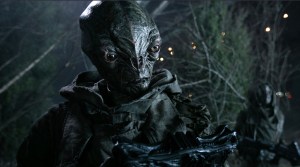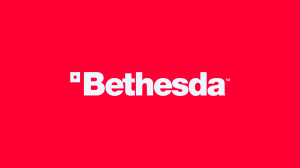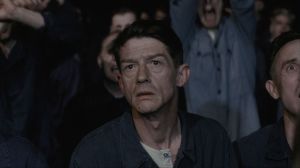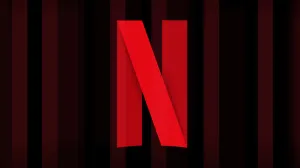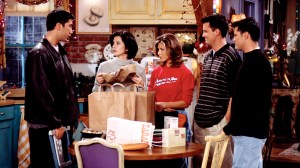
I haven’t opened most of Image’s first issues in years. Looking back on them today is looking at them with completely fresh eyes.
Videos by ComicBook.com
“Spawn” #1 doesn’t exactly fit that pattern. In the last few years, Todd McFarlane has reprinted this issue in different formats, from digital to trade paperback to hardcover to supersized oversized hardcover. I think I own it in two or three formats by this point. I’m a sucker for them, because this is one of those comics that hits all the right nostalgia buttons for me.
I’ve looked at this issue plenty of times in recent years, but I haven’t read it.
It isn’t a great comic. It isn’t bad, though. I’ve read much worse. There is a story in there somewhere, and lots of flashy beautiful McFarlane art to hold my attention until it develops more.
Yes, I’m completely grading on a curve here.Nostalgia does funny stuff to all of us.
That all said, there’s some stuff I had forgotten about in this comic, or am just now realizing.
It Has Ads
There are ads in the middle of the story. McFarlane may have been the only one of the Founding Fathers to do that. Everyone else stacked them up at the end. They were always the bane of storytellers’ existences at The Big Two.
One of the ads is for the comics shop McFarlane’s family opened in Puyallup, Washington. They were blowing out their inventory of McSpidey issues. You could get autographed adjectiveless “Spider-Man” in the $2.50 – $2.50 range. Not a bad deal.
Regular issues of “Amazing Spider-Man” starting at issue #302 went from $10 down to $4 apiece.
Other ads were for Image Comics in support of local comic shops, Stabur Home Video for their line of interview VHS tapes, the then-ubiquitous American Comics & Entertainment mail order firm that I think still owes me a few bucks from “Spider-Man” #1, and “Rust,” the comic series through Adventure Comics, a division of then-Image publisher, Malibu Comics.
Spawn Webbing?!?

Why did Spider-Man’s webbing become a design element in this superhero/horror story?
I get that it’s Spawn rehashing an old memory and that maybe he needs to clear out some of those cobwebs, but I really do think a larger part of it was that McFarlane just liked how it looked, and was what he was used to drawing. He forgot that the spider webs made sense in a Spider-Man comics, but something else would be needed for a comic named “Spawn.”
All the Spawn Pin-Ups

“Spawn” #1 features the first appearance of “Pitt,” as Dale Keown drew a Pitt pin-up in the back matter.
The other pin-up for the issue was created by George Perez.
Rick Leonardi drew a pin-up in issue #2
McFarlane skipped the pin-ups in issue #3.
Dave Sim drew Cerebus-Spawn in issue #4.
Jason Pearson has a two page spread in issue #5.
Marat Mychaels had a pin-up in issue #6.
McFarlane the Inker
I remembered McFarlane inking Rob Liefeld’s “New Mutants” covers back in the day, but forgot how much inking he did for others in the early Image days. There are ads/pin-ups in these early issues of Spawn that McFarlane inked.
He finished a Whilce Portacio Wetworks pin-up, a Jim Valentino Shadowhawk ad, and that Marat Mychaels Spawn pin-up I just mentioned.
If all else failed, McFarlane could have just made an interesting and very stylistic inker for a living.His inks over Erik Larsen’s work in recent “Spawn” issues were hit and miss, but I don’t think those two ever found their groove together too much, either.It was an interesting experiment, though.
Learning from David Michelinie
One thing I learned from recently reading through McFarlane’s “Amazing Spider-Man” run was just how often the most memorable panels were the most expository. All those great shots of Spider-Man swinging over New York City were done to cover for the page or two Michelinie would use to set up the rest of the issue, recap the story so far, or both. Spider-Man did a lot of thinking while swinging above familiar New York City landmarks.
McFarlane carried that tradition into Spawn. Most of the early issues are of Spawn wandering around the city and posing dramatically while thinking about what the whole story should be in the comic.

Literally, the first three pages of “Spawn” #3 is Spawn standing in an alley, holding his cape, and thinking. It’s an insanely static opening to an issue of a comic book, but McFarlane can pull it off because his visuals are so strong.
Things didn’t even start to happen with Spawn until the third issue, when he came up against the Violator and started to be more pro-active. Having a “villain” to directly work against helped a lot.
The Saga of Dale Keown
McFarlane was a firebrand in those early letters columns, going to war with Marvel and DC over issues of respect, creators’ rights, and ownership. At one point, he even reprinted Frank Miller’s speech demanding Marvel pay up to Jack Kirby for all The King had given them.
In many ways, it seemed like it could be the heir apparent to Dave Sims’ “Cerebus” letters column: highly opinionated, creator-centric, and filled with debate.
Things didn’t quite work out that way, though “Spawn” does maintain a letters column to this day.
The first three issues, though, have a fun through line in the back matter with Dale Keown. It’s well known that Keown is one of the artists the Image Founders wanted to bring over very early on.
In the first issue of “Spawn,” Keown has a pin-up featuring his new creation, P.I.T.T.In issue #2, Todd McFarlane announces that Keown is bringing Pitt to Image Comics. In issue #3, McFarlane announces that Pitt is arriving two months earlier than expected because Marvel kicked him off Hulk once they heard about his plans.
As I recall, Peter David disputed this timeline in a “But I Digress” or an interview somewhere, but I can’t find that reference at the moment. The other version of the story is that Keown quit Hulk, likely to get the bigger paycheck on Pitt.
In a recent Off Panel podcast, Rob Liefeld talks about offering Keown $10,000 to do a short story for him to get him over to Image.I don’t think that story ever happened, though.
Honestly, given how hot the fires were burning at that point, I almost wouldn’t blame him. It’s a shame he didn’t finish off that storyline and make it to issue #400, in either case.
Summing Up Spawn
I only looked at the first half dozen issues in preparing this column. There’s a whole ‘nother column to be written over subsequent issues featuring guest writers like Neil Gaiman (and the lawsuits that followed), Dave Sim, Alan Moore, and Frank Miller. Maybe I’ll get back to that later in the year. It would be fun to compare and contrast McFarlane’s storytelling with a writer as opposed to being on his own.
For now, re-reading these early issues has been a blast of nostalgia, tempered only slightly by my 25 years-more-critical eye that sees things a little more clearly now.We pay a heavy price for maturity and experience.
PipelineComics.com|| Twitter || Instagram || E-mail


